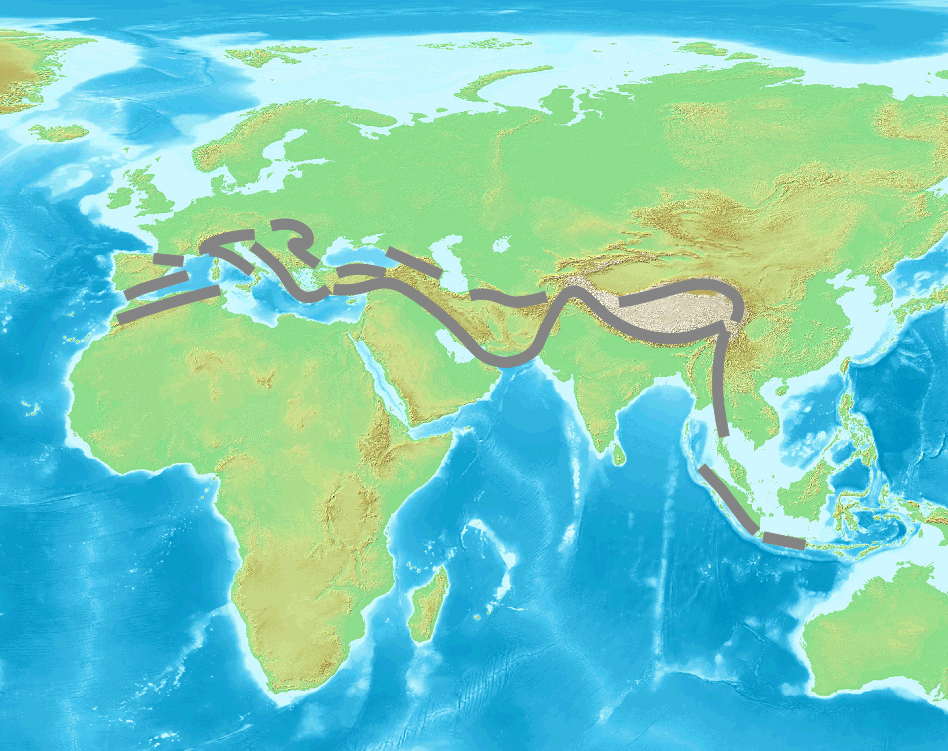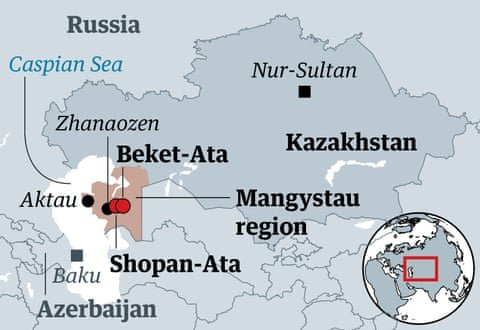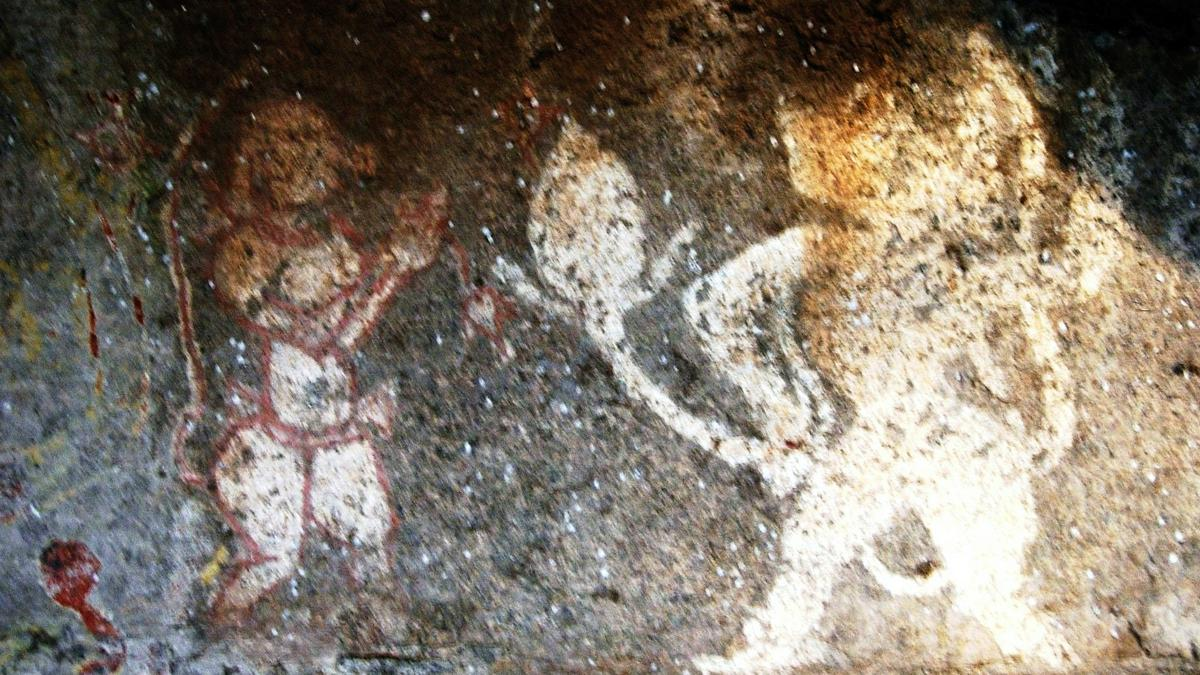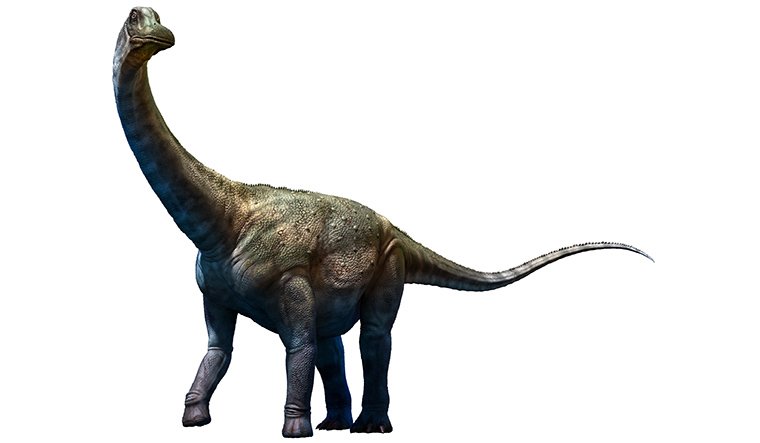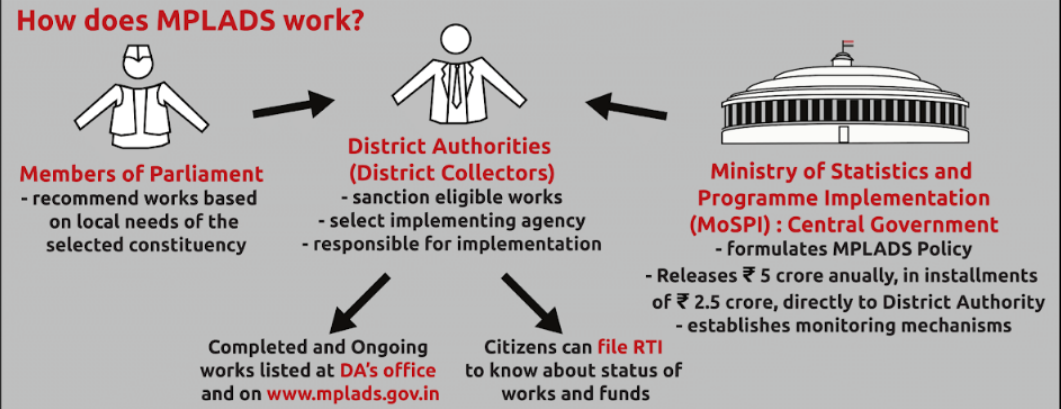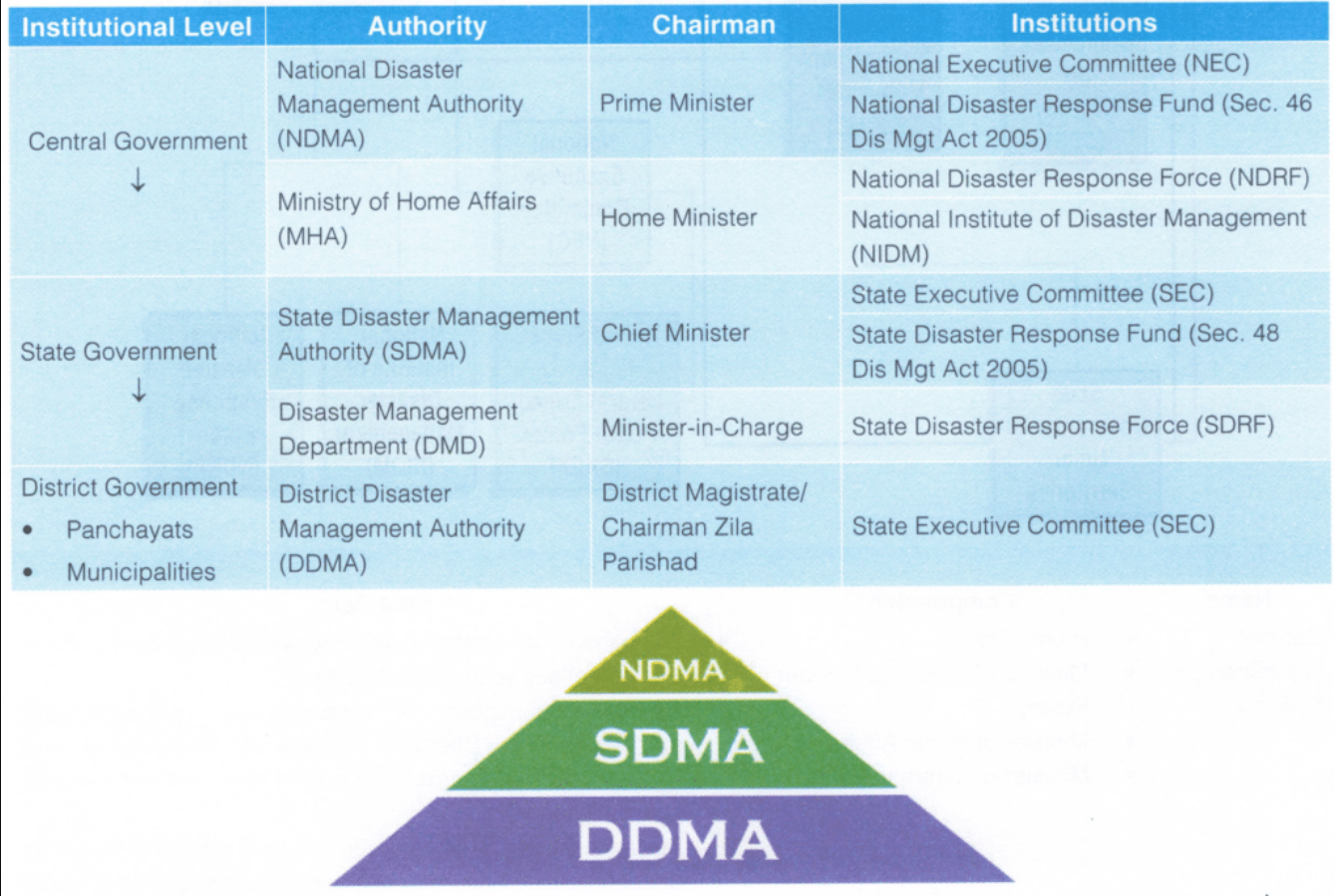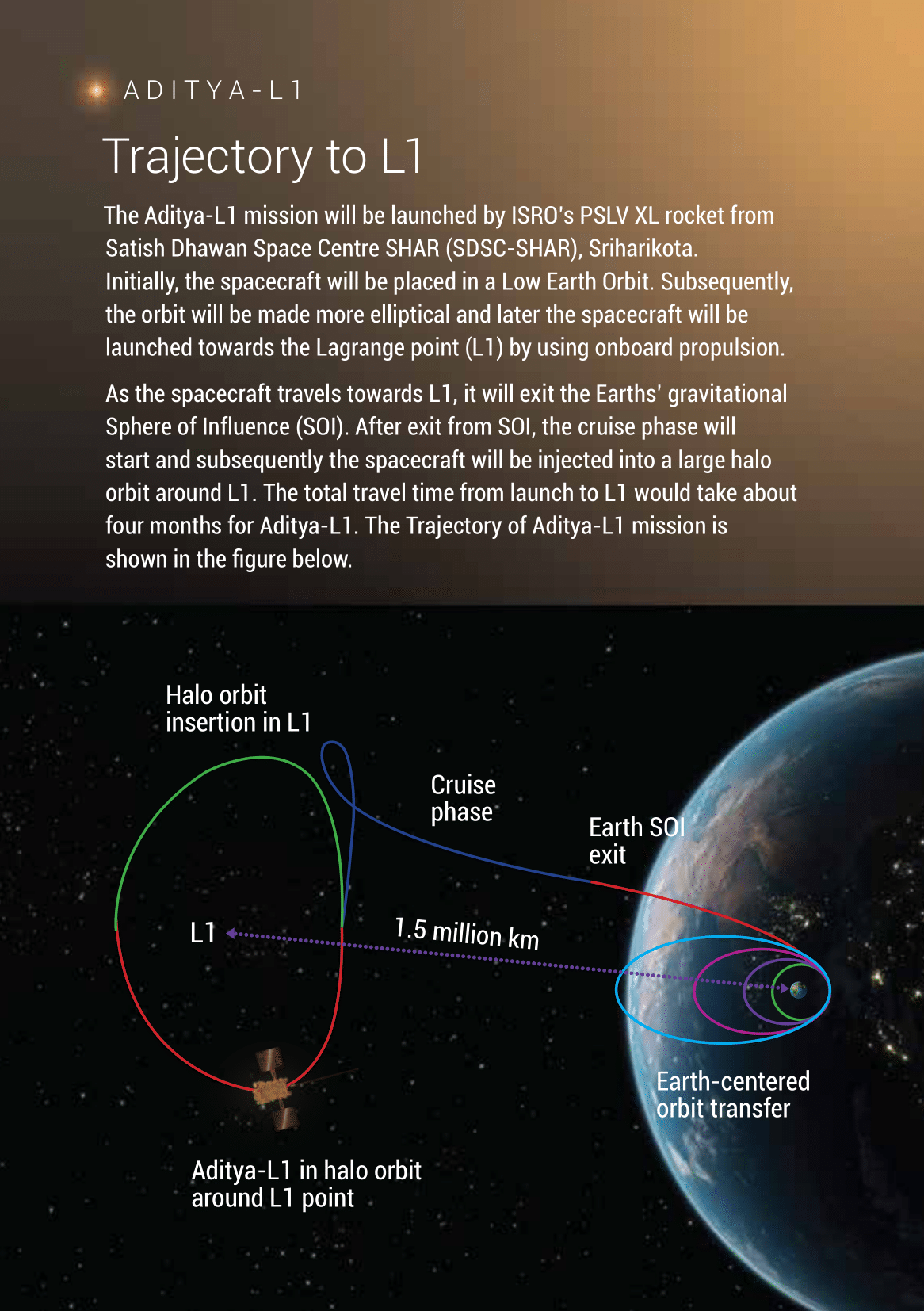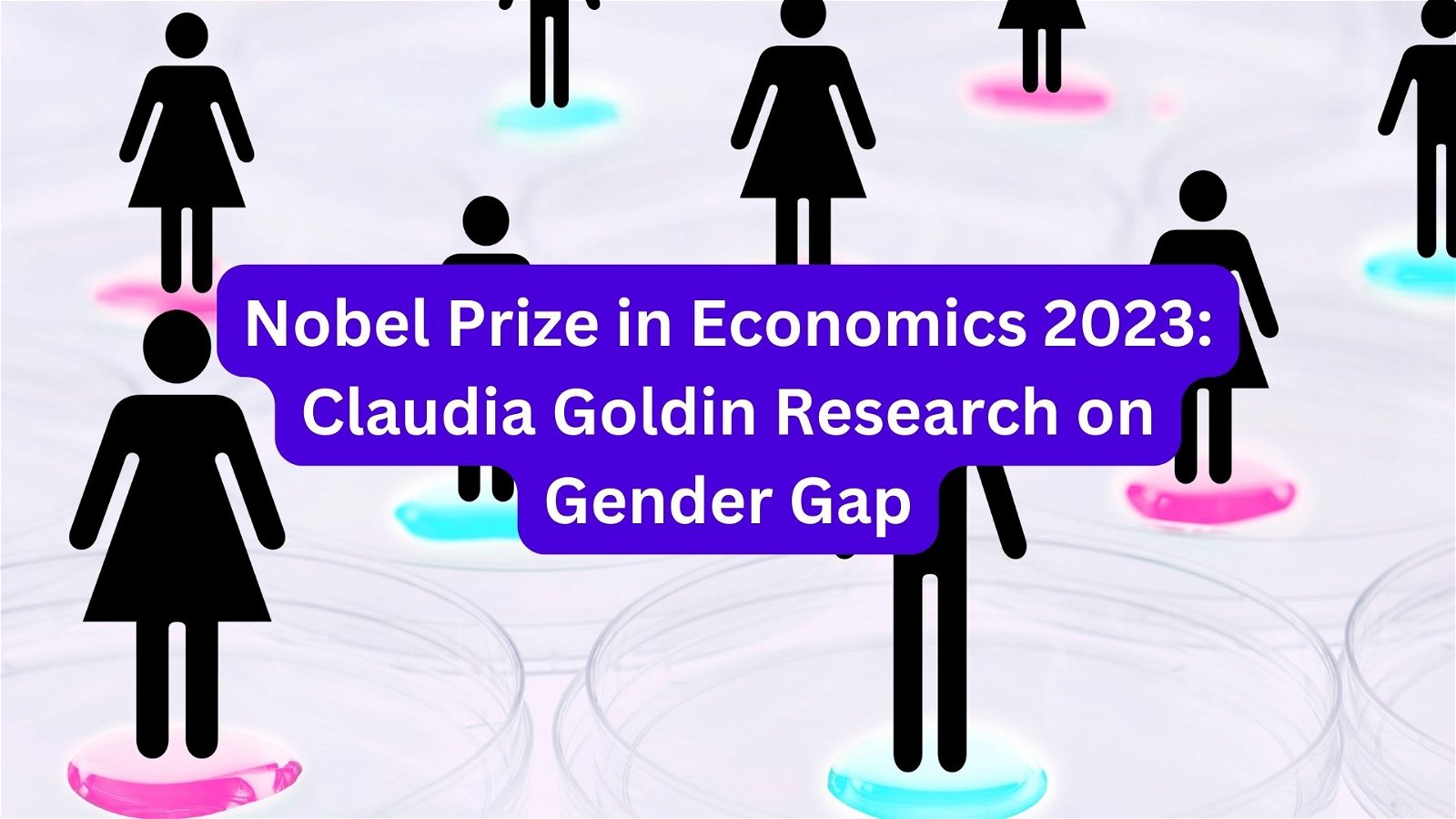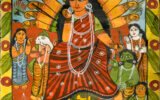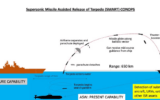
Current Affairs August 14, 2023: Keralam, PM-USHA, Election Commission, Parliamentary privileges, Governer, President and the State Bills, Extending SC benefits to Dalit Christians and Muslims, Metagenome Sequencing
Subscribers of "Current Affairs" course can Download Daily Current Affairs in PDF/DOC
Subscribe to Never Miss an Important Update! Assured Discounts on New Products!
Must Join PMF IAS Telegram Channel & PMF IAS History Telegram Channel
{GS1 – MIH – Reorganization – 2023/08/14} Keralam
- Context (IE): Kerala Assembly passes a resolution to rename the state as Keralam.
Origin of the name
- The earliest epigraphic record that mentions Kerala is emperor Asoka’s Rock Edict II of 257 BC.
- The inscription refers to the local ruler as Keralaputra (Sanskrit for “son of Kerala”) and also “son of Chera”, referring to the Chera dynasty.
About ‘Keralam’, scholars believe it could have originated from ‘Cheram’
- The word ‘keram’ is the Canarese (Kannada) form of cheram, and Keralam means Cheram — the region between Gokarnam and Kanyakumari.
- The term’s origin could be from the root ‘cher’, which means to join.
- This meaning is apparent in the compound word ‘Cheralam’, in which Alam means region or land.
Demands for the modern state
- The people speaking Malayalam had been ruled by various kings and princely states in the region.
- It was in the 1920s that the Aikya (unified) Kerala movement gathered momentum, and a demand for a separate state for Malayalam-speaking people came up.
- It aimed to integrate Malabar, Kochi and Travancore into one territory.
- The Keralites, who have the same language and shared culture and were unified by the same history, rituals and customs, were inspired by the freedom movement to ask for unification and integration.
The state of Kerala after 1947
- The merger & integration of princely states was a significant step towards forming the state of Kerala.
- On 1 July 1949, the two states of Travancore and Kochi were integrated, heralding the birth of the Travancore-Cochin State.
- When it was decided to reorganise states on a linguistic basis, the State Reorganisation Commission of the Union Government recommended the creation of the state of Kerala.
- The Commission under Syed Fazl Ali recommended the inclusion of the district of Malabar and the taluk of Kasargod to Kerala.
- The State Of Kerala came into being on November 1, 1956.
- In Malayalam, the state was referred to as Keralam, while in English, it was Kerala.
What is the process for renaming a state in India?
- To change the name of a state, approval of the Union Ministry of Home Affairs is required.
- This means that a Constitutional amendment becomes necessary to affect this change.
- The proposal has to first come from the state government.
- MHA then consents after receiving No Objection Certificates (NOCs) from several agencies such as the Ministry of Railways, Intelligence Bureau, and Registrar General of India.
{GS2 – MoE – Schemes – 2023/08/14} Higher Education: PM-USHA
- Context (TH): Fourteen States have not signed MoU to join the Pradhan Mantri Uchchatar Shiksha Abhiyan (PM-USHA) scheme.
- PM-USHA is a centrally sponsored scheme launched in 2013 as a Rashtriya Uchchatar Shiksha Abhiyan (RUSA) under the Ministry of Education (MoE).
- In 2023, in light of the National Education Policy (NEP), RUSA was launched as PM-USHA.
- It aims to provide funding to higher education institutions throughout the country.
- To be eligible under PM-USHA, states must sign an MoU with the MoE, which mandates the implementation of the National Education Policy, 2020.
Objectives
- To improve the overall quality of existing state higher educational institutions.
- Implementation of recommendations of the National Education Policy (NEP) 2020.
- Ensure adequate availability of quality faculty in all higher educational institutions.
- Create an enabling atmosphere for research in the higher education system.
- Correct regional imbalances in access to higher education by setting up institutions in unserved and underserved areas.
- Improve equity in higher education by providing adequate opportunities to the disadvantaged.
- Establishing New Model Degree Colleges in districts with no Government and Government-aided institutions.
Focus Districts
- A maximum of 50% of Districts of the states will be considered as focus districts. They include:
- Remote/rural areas
- LWE (Left-Wing Extremism) prone districts
- NER (North Eastern Region)
- Areas with low GER (Gross Enrolment Ratio)
- Border area districts
- Aspirational Districts
- Districts with a higher SC/ST population

Grants
- PM-USHA provides grants to:
- Multi-Disciplinary Education & Research Universities (MERU): 35 accredited state universities in India will be given Rs. 100 crore each to take up multi-disciplinary education & research.
- Accredited and Unaccredited Universities and Colleges.
- New Model Degree Colleges.
Way forward
- 40% of the expenses under PM USHA are borne by the States. To implement the NEP, States need more funds and aid from the Centre.
{GS2 – Polity – Bodies – Constitutional – 2023/08/13} Election Commission
- Context (TH): GoI introduced a Bill removing the Chief Justice of India (CJI) from a three-member panel to select the Chief Election Commissioner (CEC) and Election Commissioners.
Existing Procedure for the Appointment of CEC and ECs
- The President appoints CEC and ECs after recommendations from the government.
- In March 2023, in the Anup Baranwal vs Union of India case, SC ruled that a three-member committee shall choose the CEC and ECs until a law is passed. The members of the committee include:
- The Prime Minister
- The Leader of the Opposition in the Lok Sabha OR the leader of the largest Opposition party
- The Chief Justice of India (CJI)
|
- Qualification of CEC and ECs: Persons holding or have held posts equivalent to the rank of Secretary to the central government.
- Salary and allowances: Same as that of the Cabinet Secretary.
- Term of office: 6 years or until they reach the age of 65 years (same as earlier) and will not be eligible for reappointment.
Independence?
- The CEC is provided with the security of tenure. He cannot be removed from his office except in the same manner and on the same grounds as a judge of the SC.
- Unlike in the case of CAG and the SC Judges, salaries, allowances and pensions of CECs and ECs are not charged upon the Consolidated Fund of India.
2023 Bill
- According to the bill, the President will appoint CEC and ECs on the recommendation of a three-member selection committee consisting of:
- The Prime Minister
- The Leader of the Opposition in the Lok Sabha OR the leader of the largest Opposition party
- The Cabinet Minister nominated by the PM.
Issues
- This bill runs counter to a recent judgment of a Constitution Bench that envisaged an independent selection committee that included the Chief Justice of India.
- The executive majority in the selection process amounts to disregarding the spirit of the Court’s recommendations.
- It would dilute the independence of the Election Commission as the majority of the selection committee members will be from the ruling government.
Positive aspects
- The bill seeks to protect the Election Commissioners from removal, bringing them on par with the CEC. (Presently, the President can remove the two ECs on the recommendation of the CEC)
Way forward
- A non-partisan and independent ECI is essential for the robustness of electoral democracy.
- The CJI should be included in the selection process. The CJI’s presence in the process could legitimise appointments and affect judicial scrutiny of errors or infirmity in the selections.
Dinesh Goswami Committee’s (1990) recommendations
Constitutional Provisions Related to Elections
|
{GS2 – Polity – IC – Parliament – 2023/08/14} Parliamentary privileges
- Context (IE): Rajya Sabha Chairman referred complaints related to the privilege of the House against TMC’s Derek O’Brien and AAP’s Raghav Chadha to the privileges committee.
- Context (IE): The Lok Sabha suspended the Congress MP, Adhir Ranjan Chowdhury, for unruly conduct and sent his case to the privileges committee.
- Parliamentary privileges are certain non-codified rights conferred to the MPs for conducting the business of the Parliament. They are a mix of provisions in IC, House procedures & conventions.
Related Provisions in the IC
- Parliamentary privileges would be those specified in a law made by Parliament.
- Parliament is yet to make any law specifying these privileges.
- Until the Parliament made such a law, privileges would be those enjoyed by the House of Commons, the lower House of the United Kingdom’s Parliament.
Some important parliamentary privileges
- IC specifies that MPs have freedom of speech and immunity from judicial proceedings against anything they say or votes they cast in Parliament.
- The Code of Civil Procedure protects MPs from arrest and detention under civil cases during a parliamentary session and 40 days before the beginning and 40 days after the end of a session.
- Parliamentary rules specify that authorities should immediately inform the Speaker of Lok Sabha and Chairman of Rajya Sabha about MPs’ arrests, releases and convictions.
|
Procedure
- If there is a belief that a privilege has been breached, any member can raise a motion.
- A member shall give notice to the Secretary-General before the commencement of the day’s sitting.
- The Chairman may or may not give consent to raise a question of privilege.
- Chairman may refer any question of privilege to the Committee of Privileges, or Council may consider the question and decide.
Conditions of admissibility
- The question shall be restricted to a specific matter of recent occurrence.
- The matter requires the intervention of the Council.
The mandate of the committee
- The Committee examines every question & “makes such recommendations as it may deem fit”.
- It can call the relevant people as part of its examination and look at related documents.
- It has to make a report and present it to the Council within a period fixed by the Council or within one month if the Council has not fixed any time.
Committee of Privileges
- The Chairman can, from time to time, nominate such a Committee consisting of ten members.
- It will also have a Chairman appointed by the Rajya Sabha Chairman.
{GS2 – Polity – IC – Powers – 2023/08/14} Governer, President and the State Bills
- Context (TH | TH): The Tamil Nadu Governor stated that he wouldn’t approve the State’s Bill to exempt it from the National Eligibility-cum Entrance Test (NEET) if he had the choice.
- In September 2021, the TN State government passed a Bill seeking exemption from the NEET and sent it to the Governor. The Governor returned it to the Speaker.
- The Legislative Assembly of TN re-adopted the Bill in February 2022 and sent it again to the Governor for his assent. The Governor forwarded it to the President.
- Now, the Governor has no more role to play in the Bill.
Options of the Governor on State Bills (Assent, Withholding, Return, and Reservation)
- When a Bill passed by the State Legislative Assembly is presented to the Governor, the Governor can choose to:
- Give assent to the Bill
- Withhold assent (only for a limited duration, according to the SC)
- Return the Bill (except if it’s a money Bill)
- Reserve the Bill for the President’s consideration.
- If a returned Bill is passed by the House again, the Governor can either:
- Give assent to the Bill
- Reserve the Bill for the President’s consideration.
President’s Decision on Reserved Bills
- When a Governor reserves a Bill for the President’s consideration, the President can:
- Give assent to the Bill
- Withhold his assent
- Return the bill to the State Legislature (If it is not a Money Bill)
- The Legislature must review the Bill within six months of receiving it.
- If the State Legislature passes it again, it is again presented to the President for reconsideration.
- Even now, the President has no obligation to give his assent to the Bill.
Types of Veto Power: Absolute, Suspensive, and Pocket Veto
Veto over State Bills
|
{GS2 – Vulnerable Sections – SCs – 2023/08/14} Extending SC benefits to Dalit Christians and Muslims
- Context (TH): In 2022, GoI formed a three-member Commission of Inquiry headed by former CJI Balakrishnan to study the possibility of granting Scheduled Caste (SC) status to Dalit Christians.
- It will examine the issue of whether SC status can be accorded to Dalits who have historically suffered discrimination and untouchability, regardless of the religion they now profess.
The reason why Hindu Dalits converted to Christianity
- Historically, Hindu Dalits have faced discrimination. Millions of Hindu Dalits converted to more egalitarian religions, including Christianity, to escape discrimination.
- However, their fundamental hope of equality has not been realised to a large extent.
Constitution (Scheduled Castes) Order, 1950
- In exercising the power conferred by Article 341, the President notified the Constitution (Scheduled Castes) Order.
- When enacted, the Order only allowed Hindu communities to be classified as SCs based on the social disabilities and discrimination they faced due to untouchability.
- It was amended in 1956 to include Sikhs and in 1990 to include Buddhists.
- So now, it provides SC status for only those communities belonging to Hindu, Sikh or Buddhist.
How were Sikhs and Buddhists included?
- The Kalelkar panel report (1955) and the high-powered panel report (1983) were the basis for amending the Order to include Dalit Sikhs and Dalit Buddhists as SCs in 1956 and 1990, respectively.
Arguments In favour of SC status
Ranganath Mishra committee
- The National Commission for Religious and Linguistic Minorities, headed by retired Chief Justice Ranganath Mishra, also examined this issue.
- In its 2007 report, the panel made a recommendation in favour of giving SC status to Dalits belonging to all religions.
NCSC’s stand
- In an affidavit before SC in 2011, National Commission for Scheduled Castes (NCSC) recommended providing reservations to Dalit Christians and Dalit Muslims, provided they fulfil two criteria:
- Practise traditions and customs that they followed before conversion.
- Face social disabilities due to untouchability.
- While the NCSC acknowledged the lack of an independent study into the status of such converts, it had recommended that until then, Dalit Christians/Muslims be included in the SC category.
National Commission for Scheduled Castes (NCSC)
Evolution
|
The argument against the SC status
Government’s stand
- Government is against the inclusion of Dalit Christians and Dalit Muslims in SCs because:
- Dalits who converted to Islam or Christianity “cannot claim to be backward” since untouchability is a feature of the Hindu religion and its branches alone.
- The religions included as SCs under the law are branches of Hinduism. They, therefore, could not be compared to Islam or Christianity.
- The identification of SCs is centred around a specific social stigma limited to the communities identified in the Constitution (Scheduled Castes) Order, 1950.
Way forward
- The conversion of Dalit Hindus to Christianity or Islam has not led to their expected upward social mobility. Hence, the disabilities of Dalit Christians continue even after conversion.
- GoI should amend the 1950 Presidential (SC) order to include Dalit Christians in the SC list.
{GS3 – S&T – BioTech – 2023/08/14} Metagenome Sequencing
- Context (TH): With SARS-CoV-2, the traditional microbiology method was left; instead, the samples were directly subjected to a genome-sequencing approach called metagenomics.
Genome


- A genome refers to an organism’s complete set of genetic material.
- It includes all the DNA (or RNA, in the case of certain viruses) that carries the instructions necessary for the growth, development, functioning, and reproduction of that organism.
- Most of the DNA is in the nucleus and intricately coiled into a structure called the chromosome.
- The rest is in the mitochondria, the cell’s powerhouse and some is chloroplast DNA.

- Every human cell contains a pair of chromosomes, each of which has three billion base pairs — adenine (A), thymine (T), guanine (G), and cytosine (C) — in precise ways.
- The order of base pairs and varying lengths of these sequences constitute the “genes”.
- Genes are responsible for making amino acids, proteins, and everything that is necessary for the body to function. When these proteins do not function as intended, it leads to disease.
Genome Sequencing
- Sequencing a genome means deciphering the exact order of base pairs in an individual.
![]()
- For e.g., in this particular piece of DNA, an adenine (A) is followed by a guanine (G), which is followed by a thymine (T), which in turn is followed by a cytosine (C), and so on.
How do you Sequence a Genome?
- Almost any biological sample containing a full copy of the DNA, even a very small amount of DNA or ancient DNA, can provide the genetic material necessary for whole genome sequencing.
- Such samples may include saliva, epithelial cells, bone marrow, hair containing a hair follicle, seeds, plant leaves, etc.
- The whole genome cannot be sequenced simultaneously because available DNA sequencing methods can only handle short stretches of DNA at a time.
- The genome must be broken into small pieces, sequenced and then reassembled in the proper order to arrive at the sequence of the whole genome.
- One strategy, known as the “clone-by-clone” approach, involves breaking the genome into relatively large pieces called clones.

- The other strategy, the whole-genome method, involves breaking the genome into small pieces.
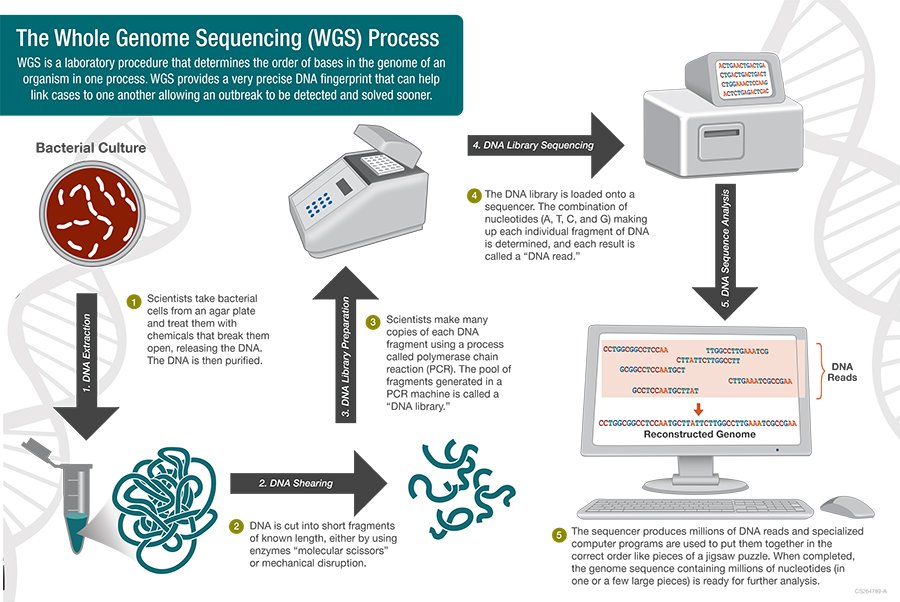
Metagenomics

- In metagenomics, the genetic materials (DNA, C) are extracted directly from samples taken from the environment (e.g. soil, seawater, human gut, A) after filtering (B).
- They are sequenced (E) after multiplication by cloning (D) in shotgun sequencing (randomly breaks up the genome into small DNA fragments, which are then sequenced individually).
- These short sequences can then be assembled (F) to deduce the individual genomes.
Metagenomics and its Advantages over Microbiology
|
Metagenomics |
Microbiology |
|
| Definition | Metagenomics is a subset of genome sequencing that involves the study of genetic material (DNA; sometimes RNA) extracted directly from environmental samples. | Microbiology involves the study of microorganisms. It has subfields like bacteriology, virology, and mycology (study of fungi). |
| Advantages of Metagenomics over Microbiology | It is a broader approach to analysing the genetic material of entire microbial communities within a specific environment. | It focuses on the detailed study of individual microorganisms and their characteristics. |
| It does not require the isolation and cultivation of individual microorganisms.
It is time-efficient and useful in complex ecosystems when microorganisms cannot be cultured in the lab. |
It requires the isolation and cultivation of microorganisms in the laboratory. It is time-consuming and useless when microorganisms cannot be cultured in the lab. | |
| Applications | Both methods have applications in various fields, including environmental science, microbial ecology, bioremediation, and understanding the microbiome (microbial communities in and on the human body). They are crucial in diagnosing and treating infectious diseases and developing antibiotics. | |
Importance of Genome Sequencing
- Basic Biological Research: Genome sequencing provides information about the fundamental processes of life, including gene regulation, replication, and mutation.
- Genetic Diseases: It helps identify genetic factors that contribute to diseases.
- Virus: It helps study viruses that cause diseases and how mutation increases their infectivity.
- Develop Vaccines: The knowledge developed from genome research help in developing vaccines and also to check the efficacy of the vaccines.
- Evolutionary Studies: Genome sequencing provides insights into the evolution of species, evolutionary relationships among species, and adaptive changes of the species.
- Agricultural Improvements: Genome sequencing of crop plants and livestock animals can lead to improved agricultural practices. It helps identify genes responsible for desirable traits, disease resistance, and increased yields.
- Biodiversity Conservation: Genome sequencing of endangered species allows researchers to understand their genetics, adaptability, and vulnerabilities.
- Microbial Diversity and Ecology: Genome sequencing of microorganisms helps us understand their roles in ecosystems, nutrient cycling, and interactions with other organisms.
- Biotechnology: It helps in biotechnological advancements, such as engineering microbes for biofuel production or designing organisms with novel functions through synthetic biology.
- Forensics: Genome sequencing help identify victims and provide genetic evidence in criminal cases.
- Human Evolution: By sequencing ancient human DNA, researchers can reconstruct human migration patterns and understand the evolution of modern humans.
{GS3 – S&T – Defence – 2023/08/14} Shivalik and Nilgiri-Class Frigates
- Context (PIB): Vindhyagiri, a Project 17A Frigate (Nilgiri-Class Frigate), will be launched by the President at Garden Reach Shipbuilders and Engineers Limited (PSU under MoD), Kolkata.
- Vindhyagiri, named after a mountain range in Karnataka, is the 6th ship of the Project 17A Frigates.
- Vindhyagiri is the successor of the erstwhile INS Vindhyagiri.
|
Shivalik-Class Frigate (Project 17)
- The Shivalik class or Project 17 class is a class of multi-role stealth frigates in service with the Indian Navy. They are the first stealth warships built in India.
- A total of three ships were built between 2000 and 2010, and all three were in commission by 2012.
- Mazagon Dock Limited, Mumbai (PSU under MoD), built all ships of the class.
Ships in the Shivalik-Class Frigate
| Name | Launched in |
| Shivalik | April 2003 |
| Satpura | June, 2004 |
| Sahyadri | May, 2005 |
Nilgiri-Class Frigates (Project 17A)
- The Nilgiri-class frigates, formally classified as the Project-17 Alpha Frigates (P-17A), are a series of stealth guided-missile frigates.
- They are being built by Mazagon Dock Shipbuilders (MDL) and Garden Reach Shipbuilders and Engineers (GRSE) for the Indian Navy.
- Project 17A ships have been designed in-house by Indian Navy’s Warship Design Bureau, the pioneer organisation for all warship design activities.
- Aligning with the country’s resolute commitment to ‘AatmaNirbharta‘, a substantial 75% of the orders for equipment and systems of Project 17A ships are from indigenous firms.
Ships in the Nilgiri-Class Frigates
| Name | Launched in |
| Nilgiri | September, 2019 |
| Himgiri | December, 2020 |
|
Taragiri |
September, 2022 |
|
Udaygiri |
May, 2022 |
|
Dunagiri |
July, 2022 |
|
Vindhyagiri |
August 17, 2023 |
{GS3 – S&T – ISRO – 2023/08/14} Chandrayaan 3 vs Russia’s Luna 25 Mission
- Context (IE | TH | BBC | LM): Russia’s mission to the moon, Luna 25 (or Luna-Glob-Lander), may soft land close to the lunar South Pole a few days before India’s, Chandrayaan 3.
- It is the first lunar mission of Russia after the Soviet Union disintegration.
- Implication: If Luna 25 lands according to plan, it will take away the title of the first country to soft-land close to the South Pole.
|

Why is Russia Reaching the Moon Earlier than India?
| Luna-25 will reach the moon in 12 days | Chandrayaan-3 will reach the moon in 40 days |
|
Reason 1: Trajectory |
|
| Luna-25 follow a more direct trajectory towards the moon, owing to its lighter payload and more fuel storage of Soyuz Rocket.
|
Chandrayaan-3 follow a circuitous route towards the moon, owing to its relatively heavier payload and less fuel storage of Launch Vehicle Mark-III (LVM3) or GSLV Mark III rocket.
|
|
Reason 2: Lunar dawn at landing site |
|
| Lunar dawn at landing site will happen earlier in Luna-25 than Chandrayaan-3. | Chandrayaan-3’s payloads are solar powered and has lifetime of one lunar day (or 14 Earth days).
So, it will land at the dawn of a lunar day to ensure that the experiments get the full 14 Earth days. |
How the Chandrayaan-3 Lander will Reach the Moon?
- Initially the Chandrayaan-3 mission will be launched into an Elliptic Parking Orbit (EPO) around the Earth at an altitude of 179 km.
- Then, the spacecraft will gradually increase its orbit in a series of manoeuvres to escape the Earth’s gravity and slingshot towards the moon.
- After reaching close to the moon, the spacecraft will be captured by its gravity. Once that happens, another series of manoeuvres will reduce the spacecraft’s orbit to a 100×100 km circular one.
- After that, the lander, which carries the rover inside it, will separate from the propulsion module and descend towards the moon’s surface.
- This process will take 40 days, with the lander landing at the lunar dawn.
|
What are the Other Differences between Luna-25 and Chandrayaan-3?
|
Aspect |
Luna-25 |
Chandrayaan-3 |
|
|
Rover |
Luna-25 does not carry a rover. | Chandrayaan-3 has a rover named Pragyan, capable of moving around 500 m. | |
|
Experiments |
Lander PayloadsThey will study the soil composition and dust particles in the polar exosphere and detect surface water. |
Lander Payloads
Rover Payloads
|
|
|
Mission Lifetime |
Luna-25 will work for a year because it has a heating mechanism and a power source besides solar panels. | Chandrayaan-3 will work only one lunar day (or 14 Earth days) because it does not have a heating mechanism to keep the electronics safe from extreme cold temperatures during the lunar night. | |
|
Important Missions under Luna Programme |
|||
| Luna 2 | First spacecraft to reach lunar surface. It made the Soviet Union the first country to reach the surface of the Moon. | ||
| Luna 3 | Returned first images of the far side of the Moon. | ||
| Luna 9 | First spacecraft to make a lunar soft landing. | ||
| Luna 10 | First spacecraft to orbit the Moon. | ||
Why Explore the Lunar South Pole?
- Due to their rugged environment, the polar regions of the Moon have remained unexplored till date.
- There are indications of the presence of ice molecules in substantial amounts in the deep craters in this region (Chandrayaan-1 mission indicated the presence of water on the lunar surface).
- Extremely cold temperatures here mean that anything trapped in this region would remain frozen in time without undergoing much change. Therefore, the rocks and soil in Moon’s north and south poles could provide clues to the early Solar System.
Why hasn’t Any Spacecraft Ever Landed near the Lunar South Pole?
- All the landings on the Moon so far have happened in the equatorial region.
- Even China’s Chang’e 4, the first spacecraft to land on the far side of the moon (the side that does not face the earth), landed near the 45° latitude.
Why Lunar Equatorial Region is Chosen for Landings?
- Terrain and temperature of lunar equatorial region are more hospitable and conducive for a long and sustained operation of instruments.
- The surface here is even and smooth and there are fewer hills or craters.
- Sunlight is present in abundance, at least on the side facing the earth. So, it offers a regular supply of energy to solar-powered instruments.
Why Lunar Polar Region is Not Generally Chosen for Landings?
- The lunar polar regions are not very conducive for landings because many parts lie in a completely dark region (where sunlight never reaches), and temperatures can go below 230°C.
- Lack of sunlight and extremely low temperatures create difficulty in the operation of instruments.
- Moreover, there are large craters all over the place, ranging from a few centimetres to several thousands of kilometres in size (e.g., Shackleton, Aitken etc.)

Why Some Parts of the Lunar Polar Regions don’t Receive Any Sunlight?
|
{GS4 – Empathy – 2023/08/14} Mother friendly workplace
- Context (PRINT): Maharashtra proposes nursing (Hirkani) rooms for lactating women in all workplaces. If a baby can be brought to the workplace, the mother can breastfeed the baby in this room.
|




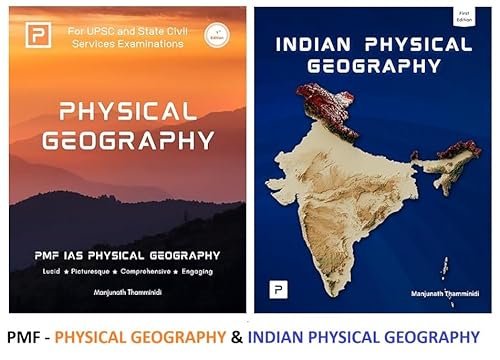
![PMF IAS Environment for UPSC 2022-23 [paperback] PMF IAS [Nov 30, 2021]…](https://pmfias.b-cdn.net/wp-content/uploads/2024/04/pmfiasenvironmentforupsc2022-23paperbackpmfiasnov302021.jpg)



